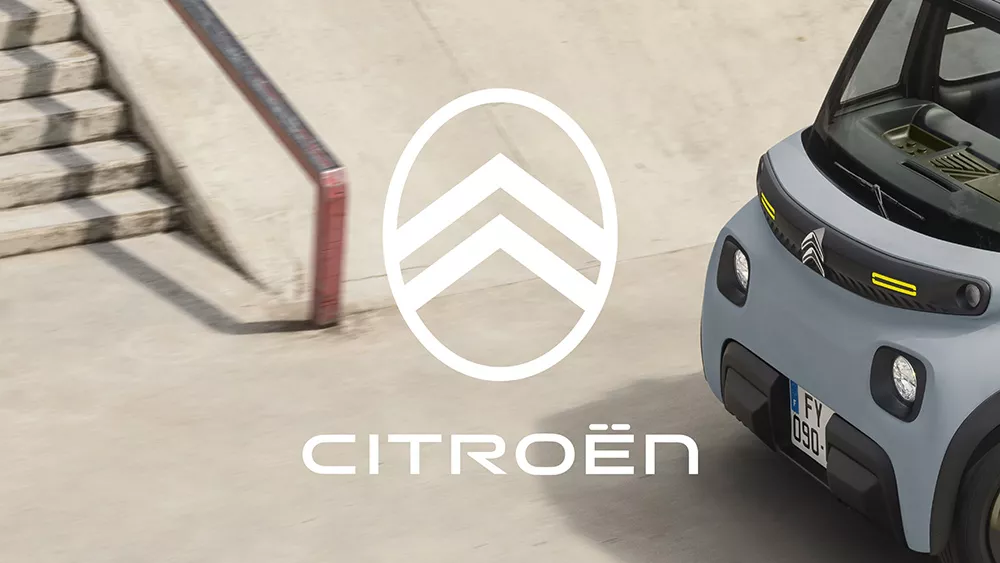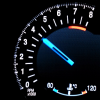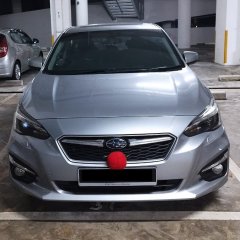Search the Community
Showing results for 'citroen' in topics.
-

5 days Road Trip in Malaysia - suggestions & tips?
Wheelslover replied to therock's topic in Travel & Road Trips
Wondering how the break into citroen? able to open the boot too? if citroen got solar film, when smash ,the glass should still stick together. so the factory programmed lock is useless? Any experts care to comments? -
Hello, I have some struggle with an ABS wheel speed sensor, the old sensor has been replaced plus we have replaced the ABS module (w/brakelines) The scanner says that there is short or a no ground to the sensor. My question is how does the ABS wheel speed sensor circiutry look like. We have tried to clean the plugs going into the BCM and the ECU with no luck aswell. Best regards and happy new year 😉
-
Bro, I think you really need new glasses for old flower eyes. It’s the Citroen fault, the black car. He can only turn left but he went straight. This time BMW no fault…….and he signalled! 🤣
- 6,040 replies
-
- 5
-

-
.png)
-
- first pagers
- lai
-
(and 1 more)
Tagged with:
-
High five for Citroen's new medium SUVhttps://www.stuff.co.nz/motoring/road-tests/109909709/high-five-for-citroens-new-medium-suv Citroen has always been more keen on quirky people movers than high-riding SUVs. It's a very Continental thing. Except that it's becoming less of thing as time goes on, which is why the French brand has finally created something that competes in New Zealand's most popular single new-vehicle segment: medium SUVs. So say "salut/gidday" to the new C5 Aircross, a European Car of the Year nominee that's heading here in September. Perhaps because it's come so late to the SUV party, Citroen reckons the C5 Aircross answers buyer concerns about the relative lack of comfort and practicality in the latest fashion-led soft-roaders. It's based on the same front-drive platform as the Peugeot 3008, but it's 55mm longer in the wheelbase (and stretched by the same amount overall). The idea is that the C5 Aircross is more spacious on the inside than your average medium SUV, more comfortable with Citroen's new-generation Advanced Comfort Seats (15mm surface foam, mattress-like filling and more memory foam underneath) and especially more practical. The rear seats are split 40/20/40, all three sections slide individually and the backrests can be adjusted for rake, meaning luggage capacity ranges from a generous 580 litres to a very impressive 720 while maintaining five chairs. Not exactly luxurious for rear occupants in the latter position, but hey - you can do it. It's all very people-mover-like. You can see what they've done there. There's just one high-specification model for NZ, powered by a version of Peugeot-Citroen's familiar 1.6-litre turbo-petrol with 132kW/250Nm. That's more grunt than you get in the top-line 3008 petrol models (121kW/240Nm) and it's matched to an eight-speed automatic gearbox. The comfort ethos continues in the suspension with Citroen's Progressive Hydraulic Cushion (PHC) dampers, a unique system originally developed for the brand's rally cars that has extra baby dampers at the top and bottom of the main units to smooth out the up-and-down movements, while maintaining good control in the mid-range. So at a projected price just under $50k, you're potentially getting a larger, more powerful and better equipped SUV (stuff like adaptive cruise will likely be standard on the Kiwi C5 Aircross) for a little less money than the equivalent 3008. It's expected to account for at least of half of Citroen's Kiwi volume when it comes on stream in September, although with no price-leading model and the fact that it's a new thing for a niche brand, it'll still be a fairly small concern. The local distributor reckons the 3008 will still outsell the C5 Aircross three-to-one. At Citroen's international media launch in Morocco. Marrakech in fact, from the chaos of the city where you're constantly dodging battered Peugeot 504 utes, out into wide open spaces and around the foothills of the Atlas Mountains. An ambitious drive-location and obviously one chosen to showcase the squishy underpinnings and long cruising legs of the C5 Aircross. The so-called "180" (that's horsepower) version of this engine is a gem: perky and punchy, even if it gets a little raucous up top. The eight-speed transmission is seamless and smooth at a cruise, although it can get a bit fidgety when you ask the big questions with the throttle. The roads in Morocco are famously bad in places: narrow, ruts and plenty of big potholes. A tough test then. As with the PHC-equipped C4 Cactus we tested in NZ late last year, we found the C5 Aircross chassis had a tendency to occasionally crash into broken tarmac at urban speeds, but cruised serenely on the open road, combining the right degree of classic Citroen "waft" with good body control. It's a ride-handling combination that suits the medium-SUV C5 Aircross much better than the city-oriented C4 Cactus. And don't mistake comfort-oriented dynamics for a sluggish feel: the C5 Aircross is literally light on its feet, with a kerb weight of just 1430kg. We ventured off-tarmac a little, although take note that as with the sister 3008, the C5 Aircross is front-drive only. Kiwi models will likely ride on 19-inch wheels, but if you're willing to step down to 18s you can have Grip Control as an option - a drive-mode selector that adjusts traction control and transmission calibration for low traction surfaces. What really stands out? Character: a more fluid low-speed ride would be welcome, but overall the Citroen's deliberately non-sporty demeanour and strong visual character are hugely refreshing. The interior ambience is pretty chill as well - lounge-like in its styling and high in equipment. The controls are pleasingly simple but there's hi-tech on board, including a neat virtual instrument panel. The choice of materials is more in the cheap-and-cheerful mould, though: the textures are interesting but a lot of the plastic is pretty hard. It's nothing like as premium as the touchy feely environment of a 3008. Why would I buy it? Because it proves that medium-sized SUVs don't have to be generic boxes. Because it really does blend SUV style with a touch of people-mover practicality. Or because Citroen is doing some pretty cool stuff these days that's full of character without being self-consciously quirky, and you want in.
- 6 replies
-
- 2
-

-
- citroen
- c5 aircross
-
(and 5 more)
Tagged with:
-
Any owner of Citroen car here? Can you share your experience on Drive comfort Interior quality and durability Car operational durability And C&C service level? TIA
- 97 replies
-
- 3
-

-
- citroen
- cycle&carriage
-
(and 3 more)
Tagged with:
-
Before there was such a thing as industrial design, there was the Citroen Type H van. Built from 1947 to 1981, the H Van used corrugated body panels to save weight, material, and manufacturing costs. Now, Citroen is revisiting the Type H with the Type Holidays, built on the current Spacetourer platform. The angular corrugated bodywork returns, this time with a pop-up roof. Under the pop-up, the interior sports a two-row bench seat that converts into a bed, along with a double bed for sleeping up to four people. A kitchenette includes a fridge, sink, and cooking area, while the toilet and rear bench can be removed to increase cargo area when not camping. Citroen debuted the Type Holidays at the Dusseldorf Caravan Show earlier in September and announced that it will be taking orders soon.
-

Citroen C4 1.6 ABS Wheel speed sensor fault.
davidjohns replied to Nisanalmera's topic in Maintenance & Repairs
The Citroen C4 1.6 may encounter an ABS wheel speed sensor fault, triggering the ABS warning light on the dashboard. best wheel alignment near me This fault can result from sensor malfunction, wiring issues, or debris accumulation. Diagnosing and repairing the fault typically involves testing the sensor, inspecting wiring connections, and cleaning or replacing the sensor as necessary to restore ABS functionality and ensure safe driving. -
Anyone can advice. Asking for friend. The Kia Seltos and price is similar to Citroen C4 yet comes with no safety tech. May i know why is people still choosing Kia Seltos? For a similar price and car size segment, is there something similar with comprehensive safety tech and value for money for us to consider?
- 73 replies
-
- 3
-
.png)
-

-
Worse still, his parking charge is kosong. 🤦🏻♂️ I thought only BMW and Merc does this stunt. Drive cheap conti Citroen still need to do this?? Take bus or MRT la! Knn…
- 6,040 replies
-
- 6
-
.png)
-
- first pagers
- lai
-
(and 1 more)
Tagged with:
-
From Creative Bloq It looks very Tiong to me. The new Citroen logo is bold, dramatic and very familiar (Image credit: Citroen) They say that sometimes you have to go backwards to move forwards. Citroen has a new logo that manages to look leaner and bolder but also incredibly familiar. In fact, it's come full circle, or should we say, full oval? To develop a more modern logo better suited to digital uses, the French carmaker has travelled back 100 years to revisit its original oval-shaped symbol from 1919. With a few tweaks, the result is a more prominent logo to spearhead the brand's transformation as it looks to "clarify its future". It's no retro gimmick, though, feeling like a genuine return to the logo's roots. It has new colours, type and a tagline too. And while I'm not saying it's one of the best logos of all time, it is a marked improvement on the current design. The current Citroen logo (left) and the new Citroen logo side by side (Image credit: Citroen) The new Citroen logo sports the familiar deux chevrons that have been on every logo in the company's 103 years of history (of interest for trivia fans, apparently they're a nod to founder André Citroën’s first company, which was a metalworking business that produced chevron-shaped herringbone gear systems). The chevrons have been made wider and more prominent, and they're contrasted by a softer ("almost humanly soft", according to Citroen) vertical oval frame. As you probably already guessed, the logic behind the new logo is to achieve a better appearance "in the digital environment", but it’ll also be seen in all other uses, including signage at dealerships and as a prominent badge on all Citroen vehicles. The new Citroen log was inspired by non-automotive brands(Image credit: Citroen) The oval has an "almost human softness"(Image credit: Citroen) Citroen’s global brand designer Alexandre Revert says: “As we look to clarify our future focus, it was logical for us to close the loop by coming back graphically to André Citroën’s first logo which represented the genuine promise of affordable and innovative mobility for all." He describes it as a "significant if subtle evolution, where the precision of the technical, functional chevrons are embraced by and contrasted with the warmth and almost human softness of the oval that surrounds them.” The in-house design team, working with Stellantis Design Studio(opens in new tab), took inspiration from non-automotive brands, including cosmetics and clothing, "to create a warmer expression of the brand". That's perhaps most clear when the logo's seen with the new colours and the wordmark, which is based on Citroen’s current proprietary fonts. White and cold grey aim to communicate calm serenity while two contrasting colours will be used for details: Monte Carlo Blue, inspired by the 2CV and the DS, makes a comeback for corporate and retail applications, and a more energetic 'Infra-Red' will add dynamic contrast. There's also a new tagline, “Nothing Moves Us Like Citroën". Citroen says the new branding will debut on a new concept car at the end of September before rolling out across its range from the middle of next year. The Citroen logo history The evolution of the Citroen logo (Image credit: Citroen) The first Citroen logo was created in 1919. It's gone through several iterations since then, with one constant always remaining in some form – the 'deux chevrons'. However, in recent years they've been getting less chevron-like after going full-on 3D in 2009 and then being flattened while retaining shading from the 3D version, which made them look more like boomerangs, becoming only a reference to the original concept. The new Citroen logo takes things back to the original logo with an oval outline and flat chevrons, but they've been made thicker. The type has also been made cleaner, with a more pleasing iteration of the previous font, which had retro futurist cyber feel to it. The logo is the latest in a string of recent logos from car makers, from a sharp new Aston Martin logo to a confusing new Skoda logo and the more radical Dacia rebranding.
-
New design language, riding on the popularity of fastback and crossover. BTW, it is the cousin of Citroen C5X. Peugeot 408 GT Peugeot 408 HYBRID
- 20 replies
-
- 14
-

-
I thought this is the next generation Citroen C4 Cactus. The devil in me almost want to swing my door wide open to test if these ugly looking pads work as intended.
- 412 replies
-
- 13
-
.png)
-
It is extremely common for small bikes to use the emergency lane of NSH because of their slow top speed and also it's probably dangerous to them, to use the left lane. Only big bikes that can get up to speed will take the right lane. This is also why so many riders have been killed because they crashed head on into broken-down trailers on the emergency lane. For this case, the Citroen driver was careless, no two ways about it. Could have happened on a normal lane anyway.
- 6,040 replies
-
- 4
-

-
- first pagers
- lai
-
(and 1 more)
Tagged with:
-
My colleague has never been to Thailand and he is an expert on Thailand! I usually go 4 or 5 times a year and he always tells me James don't go all the women will kong tow you and cham you and you will give them all your money! I told him don't be silly! No need to waste their time on kong tow and I will still give them all my money! Another colleague has never been to Japan. Last 3 years I have been persuading her to go and now she is an expert on Japan telling me Japan is like this and Japan is like that. Go one time, see one thing and thinks the whole of Japan is like that! Anyway many people have never even driven a Citreon or own one but is an expert on its reliability! So is Citroen reliable or not? These are the survey rankings. I choose many many because if you only used one it could be skewed. Anyway I have been to France and I have seen many Citreons there and they were all not broken down at the side of the road with the owners cursing I should have bought a Toyota! Although the Citroen C1 owners did buy a Toyota! I have no dog in this fight, I am just curious what the true picture really is! Top is best Not surprising as its a Toyota! Citroën C1 named Which? most dependable car One of the cheapest cars on the market beat the Mercedes Benz E-class, which was named best in luxury sector Customer satisfaction survey predicts Top 10 cars that will "make you happy"
- 97 replies
-
- 1
-
.png)
-
- citroen
- cycle&carriage
-
(and 3 more)
Tagged with:
-
Following on from its successful SUV offensive with the launch of C3 Aircross SUV and C5 Aircross SUV - 300,000 and 200,000 sales respectively - Citroën is ready for the next stage in the rollout of its product strategy, focusing firmly on the hatchback market. Compact hatchbacks remain an important part of the European car market, accounting for nearly 28% of C-segment sales in 2019. New ë-C4 and New C4 tick all the boxes in this competitive segment, while offering a modern and characterful new design concept as an integral part of the product offering. Citroën's new-generation compact hatchback is inspired by its customers and the way they experience their cars. The 100% electric New ë-C4 and New C4 have all the qualities needed to shake up a segment that is having to reinvent itself. For Citroën, that means offering an all-new silhouette with a choice of 100% electric, petrol or Diesel power. THREE DIFFERENT POWERTRAINS TO CHOOSE FROM: 100% ELECTRIC, PETROL OR DIESEL New ë-C4 - 100% ëlectric and New C4 are the same modern and technologically advanced car, but with an enhanced choice of powertrains: 100% electric, petrol or Diesel. Customers simply choose the high-performance and efficient option that best meets their needs. New ë-C4 is the fifth electrified model to be announced in 2020 as part of Citroën's electrification strategy - after C5 Aircross SUV Hybrid, Ami, ë-Dispatch and ë-SpaceTourer. INNOVATIVE POSTURE AND ASSERTIVE STYLE New Citroën ë-C4 and New Citroën C4 also represent a new design concept at the heart of the C-Hatch segment, with a unique and bold identity. The elevated and assertive stance means the body shape has all the elegance and dynamism of a hatchback, while subtly adopting certain SUV traits for added strength and character. Aerodynamic and flowing, the exterior design echoes Citroën's well-known aesthetics, while bringing a new expression of style to the range. Its warm and high-tech interior instantly expresses well-being, comfort and modernity. A NEW EXPRESSION OF THE CITROËN ADVANCED COMFORT® PROGRAMME The complete embodiment of the Citroën Advanced Comfort® programme, New ë-C4 and New C4 offer a new sense of modern, all-round comfort: Driving comfort is assured with Advanced Comfort seats and suspension featuring Progressive Hydraulic Cushions®. Comfort is amplified still further in New ë-C4 with the benefits of ë-Comfort: quiet operation, smoothness and fluid driving sensations. Travelling comfort is underpinned by the amount of interior space and the practical on-board features - including an innovation for the front passenger (to be disclosed on 30 June). Comfort in use is derived from the numerous on-board technologies and driver assistance systems. Comfort of the mind comes from the soothing and sophisticated interior designs. A LEGACY OF COMPACT CARS Citroën's compact cars have been a success story since the first C4 in 1928. A history that includes the GS - voted European Car of the Year in 1971 - which is celebrating its 50th anniversary this year. A series of cars acknowledged for their character, comfort and exemplary road manners over many decades: C4-1928, Ami 6/Ami 8, GS/GSA, BX, ZX, Xsara, C4-2004, C4-2010 and C4 Cactus.
-
I agree, my family used to own a renault megane (early 2000s) and also citroen DS4 (2014). Tried to sell the megane a couple of times thru it's 10 years with us, but due to the massively low price regardless we sell direct or go dealer/trade-in. Eventually we gave up and kept it till scrap. Same case with the DS4, I remember even some dealers don't even want to take in. lol. We're lucky the renault is actually quite reliable. Other than wear and tear, drove it till 10 years with 200K on the odo with only constant issue with power windows. The citroen, not so 😅
-
Hey guys, been a long time since I've been active here, but you know what? I've been brewing a car taxation plan in the back of my mind for months, just never sat down to write it out. We all know the legendary COE and many of us by now have already said it needs a do-over, even the polimakers are starting to say something about giving it a do-over. But always without reconsidering what classifying cars should be. Since I'm never gonna get into the "job" of public service, here's my comprehensive... uh... suggestion? You wanna tl;dr? Fine, I'll leave one at the end. Total COE Restructure Let's start with the headliner, which is always our iconic certificates (we know our car don't last forever, because of COE). Since its inception, the COE has, for consumers, been fundamentally separated into categories A and B, which for now I will focus on. As a reminder; Category A represents passenger vehicles up to 1,600cc or 130hp (97kW), and Category B is just... anything over that, making the assumption that B category vehicles are inherently larger or more luxurious vehicles. Now, the main proclaimed goal of COE is managing the vehicle population, and ostensibly managing road congestion by limiting the volume of cars. With that stated intent in mind, who agrees that a car's power output and displacement has any real bearing on its ability to create congestion? Would ten buses cause more congestion than ten Golf Rs in the same stretch of road? Would ten Cat B Golf Rs cause more congestion than ten Cat A Golf (....what's it called now? 90TSI? Scrap that too) Ten buses would definitely block more road than ten Golfs, EA888 or not, but of course the counterpoint is that ten buses holds many times more people than ten Golfs, or even the equivalent number of Golfs in terms of length. Redefining the Categories... on Size. So my suggestion is, actually, quite simple - let's redefine COE categories based on the physical size of vehicles. This is easily accessible information, I cannot think of any car that you cannot get dimension information for, and if you really can't, there's nothing stopping the homologation department from breaking out a tape measure. I don't think I want to arbitrarily define numbers I think are suitable for separating Category A and B at the moment, but... If we consider trends, I'd say a comfortable position for Category A is 4,700mm long and below, as most "compact" sedans today remain in the ~4,650mm long range, and plenty of small hatchbacks are well low that. (Isn't it ridiculous that a 2020 G20 3-series now is longer than the 1994 Mazda Capella/626?) Anyway, keeping things simple would be using length, because that is usually what really determines how much space a car needs on a road. I consider 4.65m a median of sorts, 4.7~5m the range locals traditionally consider a large family car, and that anything over 5m, nobody is going to call that small. Cars under 4.4m are typically the 'small' ones today, you'd be hard pressed to still find something under 4m. Again, keeping it simple, if we were to retain a binary classification, Category A could be below 4.7m and Category B anything longer than that. Alternatively, we can expand it a little to include overall footprint, by taking length x width of the car, but given that lanes are lanes and people aren't supposed to be driving across two lanes, it occurred to me while writing this that that's really a little unnecessary, plus it makes it a tad harder to account for capacities. Long story short though, is let's just redefine COE categories based on size/length of a car, not its engine power/displacement, which no longer has any real direct bearing on its state of luxury, economy, efficiency, or, most importantly, physical size. COE Incentive for Family Vehicles With Singapore's infamously small land area, there's a consistent push for car sharing, reducing the number of individual vehicles, increasing the person per vehicle, and so on, but there's also a consistent and very unhappy demographic of families that for practical purposes need a vehicle on demand for themselves to manage their children. Yes, you can bring your kids on a bus, but with a stroller and all the like, managing a potentially rambunctious or easily upset child whilst carrying a baby or other nightmare scenarios, you can imagine all of that, and there are plenty of little articles about why families scrounge everything they can to afford a car even with the wide availability of ride hailing and our celebrated public transport. (Simply don't Go aside) By their nature, a sportscar, two seaters especially, have less capacity for transporting and are traditionally the domain of luxury, and rarely sit in the lower price classes. But at the same time, a tiny convertible like a Daihatsu Copen may be really just a recreational vehicle for two, but it takes up virtually no road at all compared to a Toyota Fortuner. With this in mind, I'd propose that any vehicle with less than five seats incur a COE multiplier - it should cost more to own a vehicle of this type, but it should still be in accordance with its size. As such, a 7-seater, which has the capacity to hold more people, and is often a choice made to accommodate a growing family, should be incentivized - it should have a COE reduction. Of course, it's always going to be true that cars spend a lot of time with less than their entire capacity filled, but there's really not a whole lot we can do to mitigate that. But the fact is that placing a Polo GTI in the same taxation category as a Nissan X-Trail, or a bus-lane demanding Aventador, is antithetical to the system's intent. Many of the times a family that really could do with a vehicle are the ones who are suffering the most from sky high COEs, whereas we know by now those who can afford their fifth Porsche don't really care too much about an extra $20k. Short version: COE classification based on size of the car COE Penalty for impractical sports vehicles with less usable seats COE benefit for practical family vehicles with more usable seats But hold on, why again do we need to fuss so much? The COE system has been unfairly cruel to the folks who can arguably need vehicles the most, and at real worst an annoyance to rental/fleet companies and affluent individuals with the means to own multiple cars. There needs to be a real restructuring to allow more cars to be used by these young families who struggle in many ways because they see cars as a necessity even with all their 'alternatives', while taking more from those who are ordering their third Cayman. Size is the thing that implicates congestion potential the most, and instead encouraging a population of many small cars, two Jazzes can hold five people (even if in relative discomfort) each compared to four in a standard S-class, while taking up only marginally more effective space on the road. A Prius makes barely over 130hp and gets shoved into Cat B, but who's gonna say a Prius is appreciably more luxury than a Corolla Altis? Power and displacement has long been detached from a car's class, but physically larger cars often really do be more inefficient and luxurious - compare, say, again, an Audi A1 to an Audi A6. You can have both with the 1.4TFSI engine, but the A4 is noticeably better built on the inside. Even accounting for the tune increase, the Cat B A4 1.4 is much less efficient because it weighs more. Then you have the obviously ridiculous Mercedes Benz MFA180 spec, (A180, B180, CLA180, etc.), which previously came with the M270 "RED" engine, RED standing for reduced - that brought the 1.6L engine from MFA200 specs of around 155hp to the Category A 130hp to allow the premium brand to sell Category A vehicles here. The thing that's widely ignored is that the Cat A "RED" engine is not only less powerful, but less efficient, both in the claimed numbers and in real use. A more recent example is the 2023 Honda Civic Turbo's local exclusive Cat A 129hp tune, a substantial reduction from the engine's normal 180hp variant, without being appreciably more efficient, and even before that KM is one of just 8 territories where the ancient 1.6L engine was recycled one more time for the 2017 Civic tenth gen. Many hybrids produce over 130hp but are more efficient, but automatically get discouraged by Cat B. I'll reiterate this point, but to summarise this section; The current COE structure is outdated, nonsensical even at its inception and does not keep cars affordable for lower income families who need them to better manage their children in their busy lives, an increasingly vocal demographic that we weigh all our hopes on. Managing one kid and one stroller on Bus MRT Walk is tough enough, but our population won't grow when it's so hard to care for your children. Plus, the absurd choice of metrics of power output and displacement to classify vehicles discourages innovation in powerplants that we seriously need for reducing the gasoline footprint, resulting in a larger population of cars with outdated engines. The World's Most Expensive Cars... with the lowest specifications We already know we have the most expensive cars in the world, but have you noticed we have the lowest specced cars in the world too? Why? ARF. The ARF taxation is why you pay for your car's value, at minimum, twice over - a car's ARF, before "incentives", is 100% of a vehicle's OMV, and gets worse from there. As such, higher spec vehicles incurring higher OMV incur higher ARF. This of course makes sense from the standpoint of taxing luxury, but it also means that dealers, with their immense margins, are not willing to bring in vehicles that are well equipped. Consider Citroën under C&C, which has for whatever reason decided that the storied French nameplate should be a lower cost brand. Their latest lineups have been exclusively brought in with pretty barebone specifications, lacking even electric seat options. "Premium" Automobiles has been perhaps the most depressing offender to me personally, with their hypocritical name - their cars routinely lack any manner of technology that befits Audi's slogan, just a few of the most obviously visible ones for "wow" factor - Virtual Cockpit for example was hyped early on. Due to the expensive taxation via ARF, batch homologation and lack of flexibility in bringing in cars of individually customized equipment levels, the dealers are largely discouraged from importing vehicles with full equipment lists - as someone who personally wants a car with all the trimmings, this has been a long running frustration of mine. Audi's presense active safety/assistance suite is available on...... I don't know, which? Only the A8? The Q8 doesn't even have the sunglasses compartment and lined interior visors, for crying out loud. You can get all of those on... a Skoda Octavia. For far less. Why do I care so much about these features? Because many of these are safety technologies that are being exorcised from premium cars, safety technologies I was one of the earliest to adopt. I've a 2015 model year vehicle featuring adaptive cruise, blind spot warnings and lane keeping assist, four years before these features have reached Singapore's mainstream. And you still struggle to get these as standard on an Audi, a BMW, or a Mercedes. Even though they're widely available from mainstream brands now (Peugeot, Toyota SafetySense, Honda Sensing, Subaru Eyesight, Mazda has it too, so on), the premium marques don't offer adaptive cruise or their full safety suites, at best a cut down variant. PML BMWs have begun to have Driving Assistant across all cars, but this is limited to camera based front active city braking, blind spot warning and lane keeping, you are still denied RADAR based active cruise. And the PA imported Audi S3 in 2019 did not come with a reverse camera. I want an upgrade, not a downgrade. There needs to be more emphasis on safety technologies and not "wow" technologies, and dealers need to start offering smaller vehicles with premium equipment lists. What's a solution? Obviously this problem also lies with dealers and consumer mindsets, the desires always to cut corners on our already expensive cars, and I think it's fine that we should have to pay more for options like Virtual Cockpit, or Alcantara trim. But I think we need to stop compromising on safety technology. This is to me, non-negotiable at this point. In other countries across the world, many marques have begun offering these features as standard. Hold on, you might say, why does it matter so much? I don't need this stuff, I drive fine. So in the eight years I've been driving my beloved Mondeo, I've used Adaptive Cruise nearly every journey... But I've had the emergency brake intervention trigger only twice. I was sleepy. You will never be driving in 100% perfect condition every day of your life. We already say we've got some of the worst drivers, the most kiasu, the most impolite, and my Mondeo isn't shy about warning me that I'm less than two seconds of following distance to the car in front (I have sensitivity on high for pedestrian detection), but what's to say we can't reduce the number of accidents with these features? Side anecdote, I'm still baffled by how seven cars can have a chain collision in the middle of the highway, an empty highway during Circuit Breaker, in broad, clear daylight. What kind of absurd scenario causes that? Yes, it'll make the cars more expensive, as these aren't without a cost, but can you imagine how much less we'd lose in time and money if we had virtually zero accidents across our roads? Less congestion, less time wasted, less fuel burnt in traffic jams, no need to waste TP resources dispatching to manage the scene, less money spent on EMAS recovery. Less money lost on people idling in a jam. So I propose that there be a discount incentive for safety technology equipment on cars. Say, a $500 incentive for forward collision detection. $500 off for Blind Spot warning. $250 off for adaptive headlights. $250 off for seatbelt airbags (my Mondeo didn't come with them, sadly) Something like that. I also think, really, we should consider making it possible to fine someone extra if they were involved in an accident while driving with that feature disabled (if equipped, obviously), or at least if I were an insurance officer I would probably increase the person's excess for that incident. The legislation has long been discouraging advanced technologies and our cars have been routinely some of the worst equipped in the world, while the COE system somehow results in some of the most inefficient powerplants reaching us. You might have noticed I didn't specify a discount on ARF, which has long been the typical means of providing incentives, notably through the EV early adopters incentive and the CEVS rebate. That's because anyone who knows ARF knows that ARF is what determines your PARF rebate, more commonly known as scrap value. The PARF rebate depreciates linearly from 100% ARF to 50% over the ten years of the car's original COE, which means that every $1,000 discount on ARF is really a $500 loss to your PARF rebate. Which is why cars, particularly EVs, that have high CEVS rebates, have spectacularly poor depreciation rates. (See, for example, SGCM's BMW iX3 vs X3 faceoff) Incentives need to be serious, and to be really serious about being an incentive they need to not take from the consumer's back pocket. I also suggest we start incentivizing real hybrids, and plug-in hybrids. In a meaningful way. Tons of dealers have started offering mild hybrids, which just include a small booster battery that helps start from a standstill. These do not confer any real efficiency benefit overall. Plug-in Hybrids are expensive now, but deserve to have more penetration. I asked many a dealer, why are you not offering PHEVs? The answer? Nobody wants them. My response; nobody I've asked knows they exist. Dear dealers, you make the markets, not the consumers, in Singapore. Do us better. I suddenly got really sleepy at this point, so I'll maybe elaborate in another post. All the essential info's above. But what else do I think I want to throw in? The diesel duty raise. That was dumb - commercial vehicles are the most frequent user of diesel, and increasing their cost to run has undoubtedly lead to delivery and freight costs rising and reaching the consumer. Rental companies propping up COEs with their indifference to high COE prices? Supposedly doesn't happen, but I doubt that. Almost definitely has to be happening, and then those cheap grade low spec cars get dumped on the preowned market exacerbating the problems I described. Not to mention that expensive COEs lead to more use of rental vehicles, which the rental companies can price up to recover their costs...? Makes for a self-sustaining cycle. Anyway, as promised, tl;dr; COE current system of displacement/power is dumb (and was dumb in 1990), change classification system to be based on length. Discount COE for more than 5 seats, penalty for less than 5 seats Revise ARF/add incentives for safety technology to encourage safer cars Revise incentives to encourage more efficient gasoline cars, not just EVs, because EVs are still not ready
- 42 replies
-
- 3
-

-
- coe
- car markets
-
(and 1 more)
Tagged with:
-

Toyota's New Special Edition GR Yaris Has a Donut Mode
Zxcvb replied to kobayashiGT's topic in Japanese Talk
Yes. Gone are the days of Subaru and Mitsubishi. Now the Toyota GR Yaris sweeping the entire rally rankings for sometime now. Still have Hyundai i20 N, Ford Puma, Skoda Fabia RS, Citroen C3, Ford Fiesta, Renault Clio RS, VW Golf Polo lining up the Group Rally 1,2,3. All these small hatchbacks NOT sold in Singapore anymore. 😑 -

No one wants used EVs, making new ones a tougher sell too
ccc888 replied to kobayashiGT's topic in General Car Discussion
Our resident dealer James can share any insights? Dealers still makan Tesla or EV in general at reasonable market rate or lowball like Opel, Alfa, Citroen? -
If what you've said about non-Tesla EVs is true, can I say Citroen is misleading and taking everyone for a ride by specifically putting down list price as "after VES and EEAI"? As it was mentioned that the distributor does not let the buyer have the EEAI & VES rebate. The only thing about Tesla is I probably don't lose as much for annual depreciation because of its comparatively higher OMV vs its direct competitor, assuming both have a similar purchase price.
-
Hi, Can anyone recommend workshop at North area (woodlands/Sembawang/Yishun) that do servicing for diesel car? I was quoted by one of the workshop to replace the tank, add additive, reprogram (?) and workmanship at the cost of $1400 based on the below screenshot. (have yet send to them for further inspection) Thanks
-
Ya, C&C service is cui regardless of which brand....but citroen service more cui than Kia (i am owner of both brands)
-
Please hold tight to your chair before you scroll down for the images. ... Are you ready? ... Ok, be prepared, OK? Sadly, this is how the new Japanese Rojak will look like... Patent images obtained by Japanese magazines from the local trademark bureau show a new take on the Crown. It doesn’t seem to be wearing its distinctive badge, but we're being told this high-riding fastback will indeed be sold as a Crown. The somewhat odd shape should be familiar as the Citroën C5 X and China's Ford Evos have a similar body. Going back in time, we're getting hints of the defunct Honda Crosstour. The car featured here will reportedly go by the name of Crown Cross and should have the following dimensions: 4,930 mm long, 1,840 mm wide, and 1,540 mm tall, with a wheelbase measuring 2,850 mm. That would make it bigger in every dimension compared to the outgoing sedan, but with a slightly shorter wheelbase. Sources from the Land of the Rising Sun claim Toyota wants to sell the reinvented Crown with a four-cylinder 2.5-liter hybrid engine hooked out to a CVT. There also might be a turbocharged 2.4-liter with an electric motor and a six-speed automatic. It will sit on the TNGA-K platform and come with a choice between front- and all-wheel drive, with a plug-in hybrid option in the works. The official premiere is allegedly locked in for July 15. And I forgot to add, when I first saw its face, it is >90% like the Civic.
- 55 replies
-
- 13
-
.png)
-

-

-
Many of the "smaller" brands now focusing on EV... or at minimum "full hybird" (meaning not mild hybrid). Kia told me sometime back those mild hybrid like Stonic will discon, Citroen now only have e-C4 and Hyundai's Kona Hybrid and incoming Avante Hybrids are full hybrids...
-
Apparently it isn't the case nowadays... I tried using Quotz, Motorist and one shift last July to sell a 04/15 Citroen C4 Cactus. Paper was 14k, Quotz gave me 16k but Motorist gave me 19k. Didn't accept the offer and eventually went for consignment where I sold it for 20k in August. Also, personnel at DFM told me back in 04/22 that I bidded $600 above the 2nd highest bid for the car (yes it was a lease vehicle from DFM). If this is for a Frenchie, what about a Toyota?






























